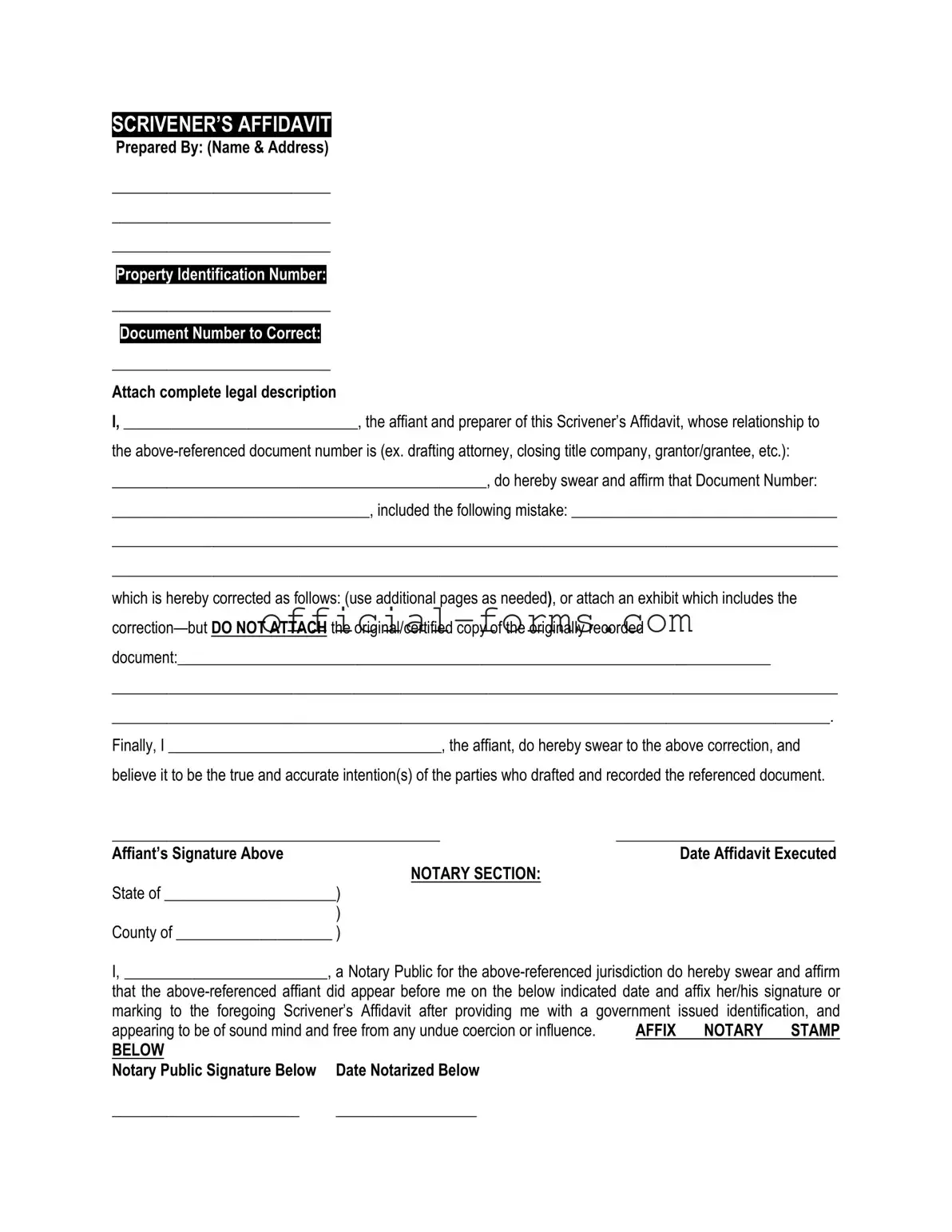Blank Scrivener's Affidavit Form
The Scrivener's Affidavit is a legal document used to confirm the accuracy of a written instrument, often in real estate transactions. This form serves as a declaration by a scrivener, or writer, who attests that the document reflects the true intentions of the parties involved. Understanding this affidavit is essential for ensuring clarity and accuracy in legal agreements.
Open My Scrivener's Affidavit Now
